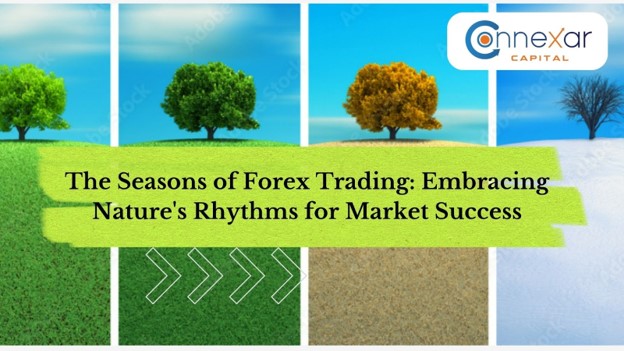
Introduction:
As traders, we are constantly seeking ways to understand the complexities of the forex market and make profitable decisions. Often, we look to technical indicators, economic news, and historical data to gain insights into the market's behavior. However, there is a source of wisdom that has stood the test of time and offers valuable lessons in adaptability and rhythm – nature itself. In this blog, we explore the fascinating parallels between the changing seasons and the different phases of the forex market. By understanding and embracing these natural rhythms, we can enhance our trading strategies and set ourselves up for success in the dynamic world of forex.
Spring - The Awakening Phase:
In nature, spring marks the renewal of life and growth. Similarly, the forex market has periods of awakening after quieter times. Spring in forex is characterized by the emergence of new trends or the revival of previous ones. As traders, we must be vigilant during this season, spotting potential opportunities as the market comes to life. Like seeds sprouting from the ground, certain currency pairs may start showing signs of upward or downward movements, signaling the beginning of new trends.
Summer - The Expansion Phase:
Just as summer brings warmth and abundance, this phase in the forex market is marked by an expansion of trends. During summer, traders can enjoy extended periods of strong trends with significant price movements. As a trader, it's essential to ride these waves and capitalize on the market's momentum. However, keep in mind that volatility can also increase during this phase like a scorching summer day, necessitating proper risk management to avoid getting burned.
Autumn - The Consolidation Phase:
Autumn is a season of change and transition. In forex, this corresponds to periods of consolidation, where trends may lose momentum and range-bound conditions prevail. Currency pairs might oscillate between support and resistance levels, resembling the changing colors of fall foliage. During this phase, traders should exercise patience and caution, avoiding hasty decisions and waiting for clear signals before initiating new trades.
Winter - The Dormant Phase:
As nature takes a rest during winter, the forex market also experiences dormant periods. Winter in forex represents times of decreased activity, often around holidays or major economic events. Trading volumes might shrink, and major players may step back, resulting in less predictable market behavior. Just like animals hibernate during this time, traders can use winter to reflect on their trading strategies, review past performance, and plan for the upcoming seasons.
Conclusion:
Nature's wisdom is abundant, and by drawing parallels between the changing seasons and the different phases of the forex market, we gain valuable insights into its rhythms and patterns. As traders, we must embrace these natural cycles and adjust our strategies accordingly. Just as farmers work in harmony with the seasons to yield a bountiful harvest, we can enhance our trading success by recognizing the appropriate times to be active, cautious, patient, or reflective.
Remember that no season lasts forever, and the forex market is ever-changing. Adaptability is key to thrive in this dynamic environment. By paying attention to the seasons of forex trading and aligning ourselves with nature's wisdom, we can become more intuitive and mindful traders, capable of navigating the market's fluctuations with confidence and grace. So, let's take a step back from our screens, observe the world around us, and allow nature to guide us on our trading journey. Happy trading!